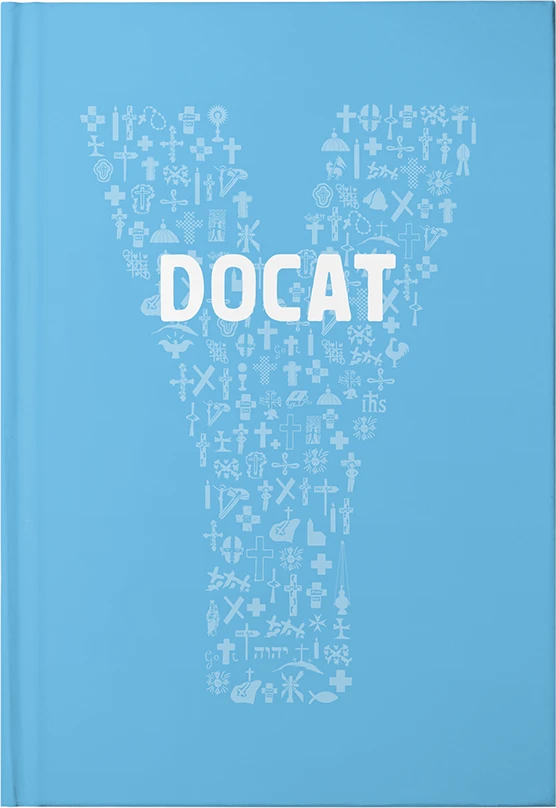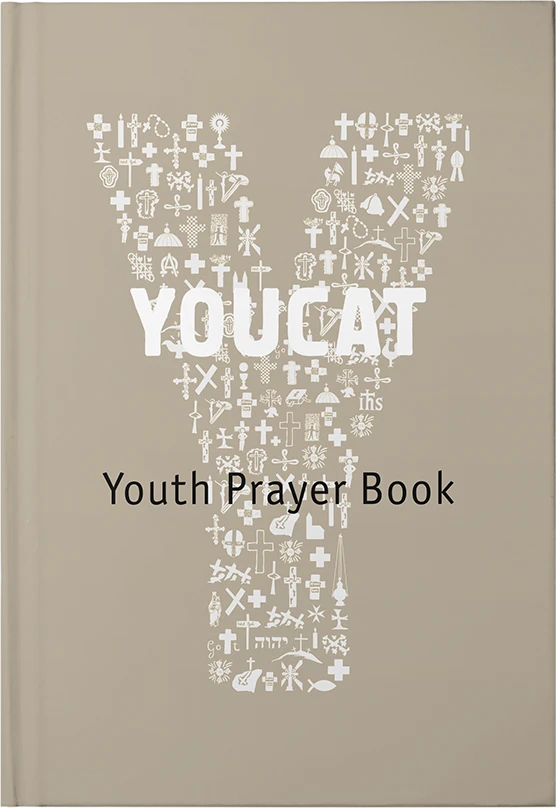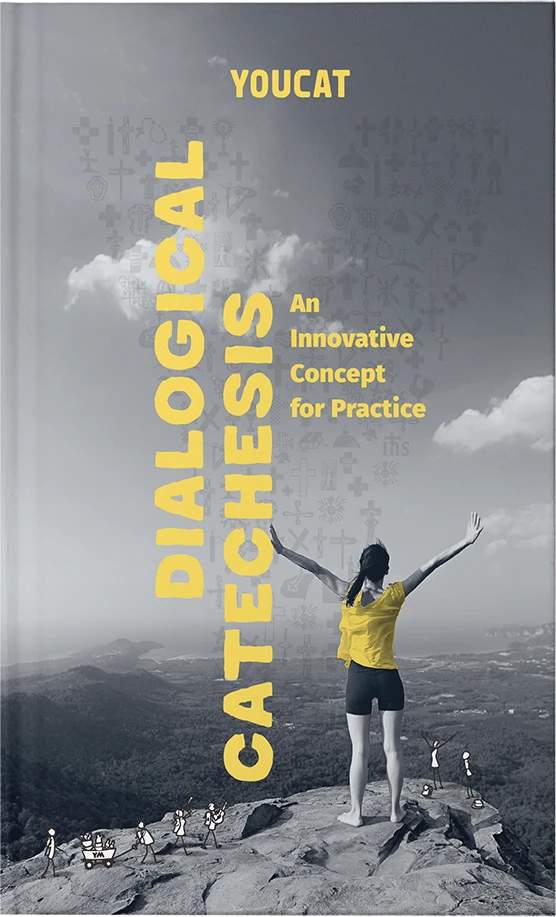

Credopedia
The Rosary
After the Our Father and the Hail Mary, the Rosary is the most widespread form of prayer in Christianity. Because it presupposes the special closeness to the Mother of God, as is given in Catholicism, it has its home there.
Definition
Rosary is the “The name of a set of prayer beads and the name of a devotional prayer that originated in the twelfth century, particularly among the Cistercian and Carthusian monks, whose lay brothers did not participate in the Liturgy of the Hours and had in the Rosary their own form of prayer (the “Marian Psalter”). Later the Rosary was promoted by other religious orders, especially by the Dominicans.” (YOUCAT 481). After the Our Father and the Hail Mary, the Rosary is the most widespread form of prayer in Christianity. Because it presupposes the special closeness to the Mother of God, as is given in Catholicism, it has its home there. But Orthodox and Protestant Christians have also discovered the rosary for themselves or use similar forms of prayer with prayer cords. We find precursors of today’s rosary among the desert Eremites of the 3rd and 4th centuries, who were looking for a means to comply with the biblical injunction to “pray without ceasing” (1 Thes 5,17). The rosary prayer repeats the Creed once, the Lord’s Prayer 6 times and the Hail Mary 53 times, and puts us in a state of concentration on God and the story of our redemption for 15-30 minutes. There are the Joyful Mysteries of the Rosary which meditate on mysteries of God’s Incarnation, the Sorrowful Mysteries of the Rosary which contemplate the Passion of Christ, the Glorious Mysteries of the Rosary which refer to the mysteries of the Resurrection and Consummation, and the Luminous Mysteries of the Rosary which bring the mysteries of Christ’s public life before the inner eye of the praying person. Saint Pope John Paul II has called the Rosary the “royal way of contemplation.”
What does the Holy Bible say?
Critics often say the rosary is an unbiblical, Catholic invention, even contradicting Jesus’ injunction “In praying, do not babble like the pagans, who think they will be heard because of their many words. Do not be like them. Your Father knows what you need before you ask him” (Mt 6,7-8). This scripture is not an affront to fervent, time-consuming prayer; it refers to contemporary, magical practices of supplication. To be sure, the rosary can also be misused as a magical invocation of God. Contrary to its reputation, the rosary is deeply biblical. The Our Father is found in Mt 6,9-13; the Hail Mary is a composition of Lk 1,28 and Lk 1,42, supplemented by a petition added by Pope Pius V in 1568. The four types of mysteries of the rosary meditate exclusively on events from the life of Jesus and refer to biblical accounts. Concisely, YOUCAT 149 states of the Rosary: “It is a compendium of the Gospels.”
A short YOUCAT-Catechesis
Time for God
So you have decided to give God the first place in your life? Then I ask you: How many of your 1,440 minutes – because that is how many minutes your day has – do you give to God? Let’s take only half (because at some point people have to sleep, eat, and work): How many of your 720 minutes belong to God? 3 minutes? 5 minutes? 10 minutes? That would be 0.4% or 0.7% or 1.4%. That is the measly reality. At least it is better than not praying at all. Or than keeping one’s Christianity balanced in an alternation of intermittent prayers (“Help, Lord, you are my last resort!”) and curses (“Go to hell, you idiot!”).
It should be clear: a priority is a priority if it takes time. Or it is not a priority. “One cannot,” Romano Guardini once said, “in the long run be a good Christian without praying – any more than one can live without breathing.” But at the same time Guardini states very soberly: “In general, man does not like to pray. He easily feels boredom, embarrassment, unwillingness, even hostility. Everything else seems more delightful and important to him.” Nothing pleases the devil more than to keep us away from God and love. For prayer, therefore, we need a decision, a firm will, and a time budget.
And perhaps the rosary. More than two decades ago, a good friend advised me in my need to pray, “Take this. And just start doing it!”
The connecting cord
It was perhaps the best advice of my life. I have been part of the community ever since. These are noisy people who single-mindedly adhere to Christianity’s greatest spiritual success model and deliberately carve time out of their day when they’re not paying bills, making small talk, indulging in front of monitors, or tending children. They take a walk, retreat to a corner of the flat, switch the smartphone to silent, and enter into the milieu of Jesus, which Mary has made homely. Incidentally, Pope Francis is also one of those people who believe that there is no better connecting cord to the Gospel and the presence of God than the rosary. What is even more surprising: over the last three decades, more and more young people have come along who wanted the full program instead of engaging in a bourgeois and superficial Christianity. Partly to blame for this was an old man who never let the string out of his sick hands and shouted to young people wherever he met them on his world travels: “Never be satisfied with mediocrity!” The man’s name: John Paul II. Western European Catholics, who were just on the trip of the greatest possible adaptation to the world, could not explain their fascination with the man with the rosary. After all, they considered Marian’s devotion to be an outdated stage of Catholic education and the rosary to be a relic from the Middle Ages.
Mysticism for beginners
If only they had listened to the famous theologian Karl Rahner, who once said, “The pious man of tomorrow will be a mystic, one who has experienced something, or he will be no more.” The rosary is mysticism for beginners. Mysticism is love that understands ever more deeply. Whoever entrusts himself to the logic of the Gospel and searches for the person who was in mystical closeness to Jesus will come upon his mother. Romano Guardini speaks of praying the Rosary as “dwelling in the sphere of Mary’s life, whose content is Christ.” One enters a space filled with the tender aroma of love, stays, looks, contemplates, feels, … again and again, every day, for a lifetime. Paul Badde once compared the twenty mysteries of the Rosary to “keyholes into the space of the Gospels”, “through which, as with a prism, we grasp more and more of the reality of God’s appearance in Jesus – and ‘with the eyes of his mother’, as John Paul II put it.”
A calculation that works
By the way: Whoever prays the rosary every day is already with Jesus 7 x 20 minutes/week. That is 7,280 minutes/year. That is 5 full days that you are with Jesus. Not rather with Mary? I can only confirm what St. Grignon de Montfort said: “Mary is the quickest, shortest, safest, easiest and most perfect way to Jesus Christ.” The quickest: Mary is already where you want to go as a Christian. The shortest: Mary saves you a thousand detours. The safest: She knows how to get to Jesus. The easiest: You can abandon yourself to her entrainment. The most perfect: You won’t find more trust in Jesus anywhere.

YOUCAT Digital
Discover our digital products, which will help you to grow in faith and become missionaries yourself.







